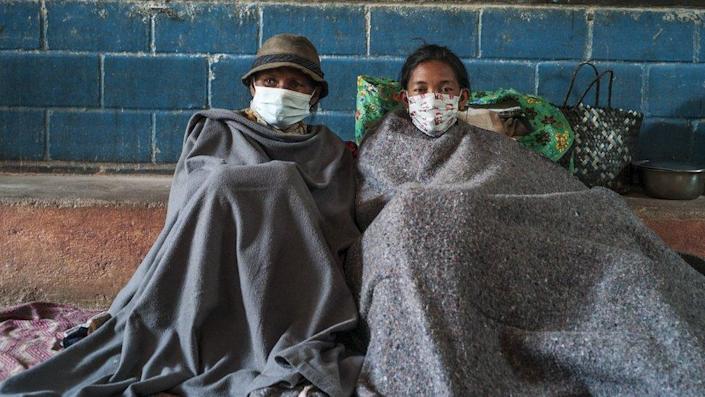
Strong wind and rain have hit the east coast of Madagascar as Cyclone Batsirai made landfall – the second major storm in less that two weeks.
Gusts hit speeds of 235km/h (146mph) and high waves battered coastal areas.
Many people have been moved to shelters and local officials fear that landslides and flooding could leave tens of thousands more homeless.
Storm Ana caused widespread destruction when it hit the Indian Ocean island nation last month, killing 55 people.
Cyclone Batsirai made landfall near the south-eastern city of Mananjary, around 530 kilometres (310 miles) from the capital Antananarivo, at around 20:00 local time (17:00 GMT) on Saturday.
Environment Minister Vahinala Raharinirina told the BBC that houses, hospitals and schools had been destroyed, and that 35,000 people had been forced from their homes, with the number expected to rise. She said that entire villages had been swept away by the storm.
“The winds are terrible. I’ve never experienced this… The waves are very high,” Mananjary resident Hanitra Raharisoa told Reuters news agency.
Further up the coast, 200 people had crammed into one room in a concrete building in the town of Vatomandry, hoping the relatively sturdy structure would keep them safe.
Clean water is scarce in the town after the utility company switched off supplies ahead of the storm, prompting fears of illness caused by dirty water.
“The government must absolutely help us. We have not been given anything,” community leader Thierry Louison Leaby told the AFP news agency.
The heavy rainfall and high waves are raising the spectre of flash floods as the ground is already saturated.


While the cyclone weakened as it moved inland, with winds scaling back to around 110km/h (68mph), the country’s meteorological agency said that the storm will cause “significant and widespread damage”.
Experts fear that Cyclone Batsirai could prove to be even more destructive than Storm Ana, which also hit Mozambique, Malawi and Zimbabwe and officials have called on the international community to offer assistance.
The UN World Food Programme (WFP) has prepared food stocks to distribute to those in need, while some people have already been evacuated. The UN has put rescue aircraft on standby.
The cyclone is expected to move westwards and emerge at sea in the Mozambique Channel later on Sunday but is then forecast to head south, avoiding mainland Africa.


The WFP says the recent pattern of destructive storms caused by global warming and climate change has caused failed harvests, high food prices and increased food insecurity in the region.
“The people of Southern Africa have been on the front lines of climate extremes for many years now and each passing storm sets them back, resetting the progress made,” said senior WFP official Margaret Malu.
Experts say that extreme weather events like cyclones will become more frequent because of climate change.
Madagascar is also just recovering from the effects of a drought, which was also blamed on global warming.
The environment minister told the BBC that the country had submitted a plan to the COP26 climate conference, which showed it needed $1bn (£740m) a year to adapt to the effects of climate change.




